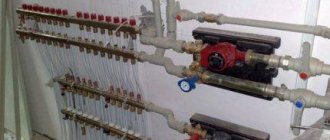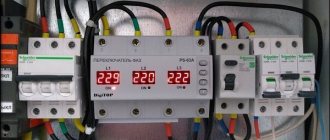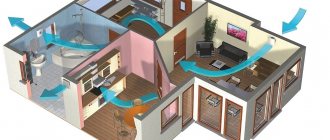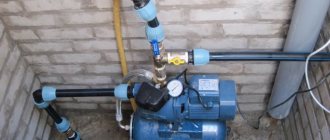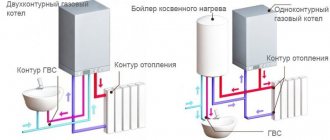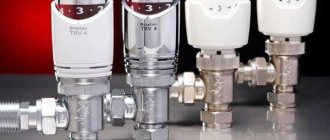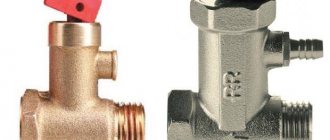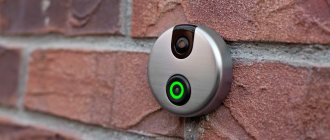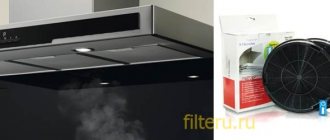The energy industry copes with its task quite confidently, but the scale of our country is such that it is not yet possible to fully provide electricity to all remote or hard-to-reach areas. This is due to many factors that are too expensive or technically unattainable to overcome under current conditions.
Therefore, more and more attention has to be paid to alternative sources that can meet the needs of backward regions without the participation of backbone networks. A promising direction is wind energy, which uses a free source of energy - the power of the wind.
Design and types of wind power plants
Wind power plants (WPPs) use wind energy to generate electricity. Large stations consist of many wind generators, united into a single network and powering large areas - towns, cities, regions. Smaller ones are capable of providing small residential areas or individual houses. Stations are classified according to various criteria, for example, by functionality:
- mobile,
- stationary.
By location:
- coastal
- offshore
- ground
- floating.
By type of construction:
- rotary,
- vane.
Vane stations are the most widespread in the world. They are highly efficient and capable of producing large enough amounts of electricity to supply consumers throughout the entire energy industry. At the same time, the distribution of such stations has a specific configuration and is not found everywhere.
Classification
The main criteria that determine the types of wind turbines are the following:
- The difference is in the number of blades. High-speed and low-blade devices have up to 4 blades, and 4 and higher belong to low-speed multi-blade devices. The fewer the number of blades, the higher the engine speed.
- Rated power value. Household - up to 15 kW, semi-industrial - from 15 to 100 kW, industrial - from 100 kW to 1 MW. The boundaries between the indicators are quite arbitrary, so settings are applied where it is really necessary.
- Axis direction. Two types are used in the designs. In the first case, this is a horizontal axis located perpendicular to the air movement, reminiscent of a regular weather vane. Such generators are characterized by higher efficiency and reasonable cost. The second option is a vertical axis, which makes the generator design more compact. It does not depend on the direction of the wind, and its blades are made in the form of turbines. The axle load is significantly reduced, therefore the power of such installations is much less. Some power plants simultaneously use several generators with different axes, connected in a network, which makes it possible to obtain high power in a relatively small area.
Principle of operation
As already mentioned, wind farms have a rotor or vane design. Rotary stations, as a rule, have devices with a vertical axis of rotation. They are in many ways more convenient than winged ones, since they do not make much noise during operation and do not require installation in the direction of the wind. At the same time, rotor designs are less efficient and can be used at small private stations.
Wing devices are capable of producing maximum effect. They use the resulting energy much more efficiently than rotary samples, but require correct orientation in relation to the flow, which means the presence of additional devices or equipment.
All types operate on the same principle - the wind flow spins the moving part, which transmits rotation to the generator, as a result of which an electric current is formed in the system. It charges the batteries, which power inverters that convert the resulting current into a standard voltage and frequency suitable for consumer devices.
To supply a large number of consumers, individual wind generators are connected into a system, forming stations - wind farms.
Generator for wind turbine
Wind turbines require conventional three-phase generators to operate. The design of such devices is similar to models used on cars, but has larger parameters.
Wind turbine instruments have a three-phase stator winding (star connection), from which three wires come out and go to the controller, where the alternating voltage is converted to direct voltage.
The generator rotor for a wind turbine is made of neodymium magnets: in such designs it is inappropriate to use electrical excitation, since the coil consumes a lot of energy
A multiplier is often used to increase turnover. This device allows you to increase the power of the existing generator or use a smaller device, which reduces the cost of installation.
Multipliers are more often used in vertical wind generators, in which the process of rotating the wind wheel is slower. For horizontal devices with high blade rotation speeds, multipliers are not required, which simplifies and reduces the cost of the design.
The specifics of assembling and installing a wind generator from a washing machine and a wind turbine from a car generator are described in detail in the articles we recommend.
Advantages and disadvantages of wind power plants
The advantages of wind farms include:
- independence from fossil resources;
- An absolutely free energy source is used;
- environmentally friendly method - no harm is caused to the environment.
At the same time, there are also disadvantages:
- the unevenness of the wind creates certain difficulties in generating energy and forces the use of a large number; batteries;
- windmills make noise when operating;
- The efficiency of wind power plants is low and it is very difficult to increase it;
- the cost of equipment and, accordingly, electricity is much higher than the price of network electricity;
- The payback on equipment decreases significantly as its capacity increases. The most productive stations do not fully pay for themselves.
The use of small stations can provide energy to a limited number of consumers, so large devices are required for large settlements or regions. At the same time, high-power wind turbines require appropriate wind flows and uniformity of its movement, which is not typical for the conditions of our country. This is the main reason for the low prevalence of wind turbines compared to European countries.
History of windmills
Windmills were first mentioned in the writings of the 10th century AD in Persia.
This is the earliest information. There, the mechanism was used to pump water from streams and also to process grain into flour. Thanks to the Crusades, the idea of windmills came to Europe. True, the Persians built horizontal structures, and the Europeans created vertical ones. It happened in the early 12th century in Yorkshire, England. The owners of the mills were wealthy feudal lords, and the standard of living of the population was determined by the number of windmills in their possessions.
Economic justification for the construction of a wind farm
From an economic point of view, the construction of a wind farm makes sense only in the absence of other methods of energy supply. The equipment is very expensive, maintenance and repair require constant costs, and the service life is limited to 20 years, and this is in European conditions. For Russia, this period can be reduced by no less than a third. Therefore, the use of wind power plants is economically ineffective.
On the other hand, in the complete absence of alternative options or in the presence of optimal conditions that ensure high-quality and uniform operation of wind turbines, the use of wind farms becomes a completely acceptable way to supply energy.
Important! We are talking specifically about large stations that supply entire regions. The situation with household or private stations looks more attractive.
Features of using a wind generator
It should be taken into account that every 10 meters of rise allows you to get a wind speed of 1 m/s more. Accordingly, the height of the mast directly determines how efficiently the generating equipment can operate. Also, the rotor diameter will also affect the efficiency of operation, so it is preferable for it to be large.
The speed of the wind flow is important for the operation of the equipment. At a speed of 1.5 m/s the blades begin to rotate. Energy generation begins when the wind speed reaches 3 m/s. For Ukrainian wind generators, the nominal wind speed is 7-9 m/s. Such equipment is capable of operating at air flow speeds of up to 52 m/s, which is about 200 km/h.
Wind generators are characterized by a wide range of applications. They are installed in private households, enterprises, isolated buildings and other facilities that require autonomous power supply. For installation, it is preferable to choose open spaces. These can be hills, hills and even shallow waters.
Wind generating equipment can be used individually or in a group. For large-scale objects, such devices are combined into parks. It can be used as a main or additional source of energy.
Capacity of industrial stations
Industrial wind farms have very high power, capable of supplying large settlements or regions. For example, the Gansu wind farm in China has 7965 MW, Enercon E-126 produces 7.58 MW , and this is not the limit.
It should be noted right away that we are talking about leaders in wind energy; other models produce much less energy. However, when combined into large stations, wind turbines are capable of producing quite a sufficient amount of electricity. The combined complexes generate a total power of 400-500 MW, which can easily be compared with the productivity of hydroelectric power stations.
Small stations have more modest indicators and can only be considered as point sources that supply a limited number of consumers.
Design of wind power generators
Many people are interested in how a wind generator works from the point of view of its design, so we will pay special attention to this issue. Such installations include the following functional units:
- installation that converts wind force into energy;
- accumulator battery;
- inverter;
- charge controller.
Equipment that converts wind energy into electrical energy includes:
- turbine, i.e. a rotor that converts the energy of the wind flow into rectilinear motion;
- a generator that converts mechanical energy into electrical energy;
- mast (this structural element can be of the “truss” type or tubular);
- turbine control system;
- multiplier (depending on the model);
- tail or azimuth drive system;
- rectifier, which is necessary when using alternators to properly charge the battery.
In terms of power, all wind generating equipment is classified into household, characterized by a power of 1-10 kW, and industrial - from 500 kW.
Geography of application
Wind energy is most widespread on the west coast of the Atlantic, in particular in Germany. There are the best conditions - smooth and strong winds, optimal climatic indicators. But the main reason for the widespread use of wind power plants in this region was the lack of opportunities for the construction of hydroelectric power plants, which forced the governments of the countries in this region to use available methods of generating electricity. At the same time, there are installations in the Baltic region, Denmark, and Holland.
Russia is still lagging behind in this matter; over the past decade, barely a dozen wind farms have been commissioned. The reason for this lag lies in the great development of hydropower and the lack of proper conditions for the operation of industrial wind power stations. However, there is an increase in the production of small installations capable of providing energy to individual estates.
Connection diagrams and methods
Although a wind turbine can operate autonomously, much better results can be achieved using combined schemes that combine a wind turbine with solar panels, a centralized power grid, diesel or gas energy sources.
Autonomous operation . In this case, a single installation is installed, with the help of which wind energy is captured and accumulated, which is then converted into the electric current needed by consumers.
The diagram shows the simplest way to use a wind generator, which is advisable to use in regions where strong winds constantly blow
Combining a wind generator with solar panels . The combined option is considered a reliable and efficient method of power supply. In the absence of wind, the battery is powered by solar panels, and in cloudy weather and during the night, charging occurs from a wind turbine.
An ideal option for a private home or farm located far from a centralized power grid. This combined scheme allows the use of two types of renewable energy
Combined operation of a wind generator and power grid . A wind turbine can be combined with electrical communications.
This arrangement is typical for industrial and commercial devices. Connection to electrical communications is also provided for some models of household wind generators
If there is an excess of electricity produced, it goes to the centralized network, and if there is a shortage, it is possible to use electric current from the general energy system.
Facts and Misconceptions
The low prevalence of wind power plants and the lack of experience with them have given rise to a lot of misconceptions regarding the properties and impact of wind power plants on the human body. Thus, there is a widespread belief that the noise level produced by an operating wind generator is unusually high. Indeed, there is some noise, but its level is much lower than is commonly believed. Thus, the noise from industrial models at a distance of 200-300 m is perceived by ear in the same way as the sound from a working household refrigerator.
Another problem that is unreasonably exaggerated by ignorant people is the creation of insurmountable interference with radio and television signals. This issue was resolved before users knew about it - every powerful industrial windmill is equipped with a high-quality radio interference filter that can completely eliminate the device’s influence on the airwaves.
People living near turbines will constantly be in the shadow flickering zone. This is a term that refers to the uncomfortable sensation of flashing light displays. Rotating blades create this effect, but its significance is greatly exaggerated. Even the most sensitive people can always simply turn away from a turbine if they happen to be close to it.
There are other, far-fetched and quite real facts regarding the operation of wind farms, their impact on the human body and the surrounding nature. Some of them are ordinary rumors, others are so exaggerated that they do not even deserve discussion. Wind energy is a full-fledged industry capable of solving energy supply issues both on a large scale and within the confines of a small country house.
Features of choice
The main criterion that buyers follow is the size of the wind turbine. The larger its size, the higher the power generated. Therefore, when choosing wind power plants for your home, you need to calculate your monthly energy consumption in advance. The result obtained is multiplied by 12 months.
Further calculations for a private house are carried out using the formula: AEO = 1.64 x D x D x V x V x V, in which AEO is the electricity consumed per year, D is the rotor diameter in meters, V is the average annual wind speed in m/s . By substituting the required values, you can easily calculate the dimensions of the required installation.
When purchasing a power plant, you should think in advance about its location. In this case, the following factors are taken into account:
- The area near the generator must be free of buildings, structures, trees and other factors that reduce the productivity of the installation. The existing interference is located at a distance of no closer than 200 meters from the installation site.
- The height of the structure for mounting the generator must be at least 2-3 meters higher than the interference in the adjacent area.
- The distance from residential buildings is at least 30-40 m, since when the blades rotate, some noise is created, causing some discomfort to others.
- It is necessary to take into account the average annual changes in weather conditions, when different amounts of electricity will be generated in the same place during the year.
Private wind farms
For Russia, the most pressing issue is the distribution of small stations that supply one house or estate. The construction of large wind farms in the climatic conditions of our country is impractical and unprofitable. The greatest value of wind turbines lies in the ability to provide energy to backward or remote communities where there is no grid connection.
For such areas, the use of small private stations is the best way to solve the problem, since the operation of a wind turbine does not require the provision of fuel, the device is simple and can be easily repaired. Providing such regions with additional equipment is much easier and cheaper than allocating large amounts of money for power transmission lines, especially when it comes to mountainous areas. Small wind turbines can generate a sufficient amount of energy without the need for maintenance or fuel costs, making them a very promising and attractive solution to the problem.
Wind generator installation
Installation of a wind generator is carried out by qualified specialists, taking into account several factors:
- choice of installation location;
- soil density;
- terrain features.
Selecting a location
The higher the blades, the greater the performance.
For the power output to be high, the wind must not be obstructed. Therefore, a wind turbine is installed where there are no tall buildings or mountains nearby . When the wind speed and strength doubles, the power output increases 8 times. However, the higher the structure, the more difficult it is to install and the more expensive it is.
To ensure that nothing interferes with the operation of the wind generator, its blades must be 4 to 6 meters above any obstacle within a radius of 200 meters .
For example, if the mast height is 5 m, the turbine output will be 1.4 kWh/day. By doubling the height, the productivity will also increase to 2.45 kWh/day. At a height of 20 m – up to 3.12 kWh/day. The higher the installation, the more difficult it is to install and the more expensive it is.
The location of the battery station should be calculated to reduce losses when transporting electricity over a distance. It should be located nearby. The cost of the cable is taken into account: the further the energy is transmitted, the thicker it is.
Suitable windmill location options:
- peak;
- shore of a reservoir;
- a large field or plain.
The mast cannot be installed on a building, as it produces sounds and vibrations that are transmitted to the house.
Valera
The voice of the construction guru
Ask a Question
When using several alternative energy sources together, the location of each group should not interfere with the work of the others. For example, wind turbine blades may obscure solar panels.
Tools and materials
It should be taken into account that the installation of a wind turbine involves a large number of capital construction works - pouring the foundation for the mast, welding.
You will need the following tools and materials:
- cement, sand;
- concrete mixer;
- cables for stretching the mast;
- fastening materials – anchor rings;
- construction equipment for installation in a vertical position.
All stages are carried out taking into account technological standards and quality requirements.
Installation steps
Installation is carried out in the following order:
- Pouring the foundation for the base of the mast.
- The foundation layer for the braces, where the anchor ring is mounted.
- Mast assembly.
- Installing the lower section of the mast into the base.
- Securing the section and pulling the cables inside.
- Connection of all other sections of the mast.
- Connection of the generator to the mast.
- Installation of power and auxiliary cables.
- Installation of blades, wind sensor, blade balancing.
- Attaching guys to the mast.
- Raising the mast to a vertical position. Secure the base.
- Installation of an anemoscope.
- Connecting the rest of the electrical part.
The wind generator is ready to start.
Review of prices for popular models
The cost of wind generators is high. This moment is the most difficult to overcome for the spread of wind energy technologies. Many home owners would love to install wind turbines on their property, but do not have the funds to purchase them. An installation capable of providing lighting to an area costs about 100 thousand rubles.
A more powerful design that allows you to supply electricity to a cottage will cost 250 thousand.
A wind farm capable of supporting a small farm costs about 500 thousand rubles. And this is not the limit. At such prices, one cannot expect a rapid spread of wind generators, so all hope is for the emergence of domestic models that can solve the issue of high cost of equipment. Alternatively, you can buy a relatively inexpensive Chinese model. Such devices cannot be repaired, being, in fact, disposable, but their price is much lower than the cost of Western models of similar power.
Conclusions and useful video on the topic
The video below provides detailed information about the operating principle and design of a household model of a wind generator:
A wind generator is an excellent source of electrical energy production, which will be especially appreciated by residents of remote areas. Various Russian and foreign enterprises offer a wide range of wind structures; in addition, household models can be made with your own hands.
Please write comments in the block below. Tell us about how you built a wind generator on your property, or about how your neighbors’ wind turbine works. Ask questions, share useful information and photos on the topic.
